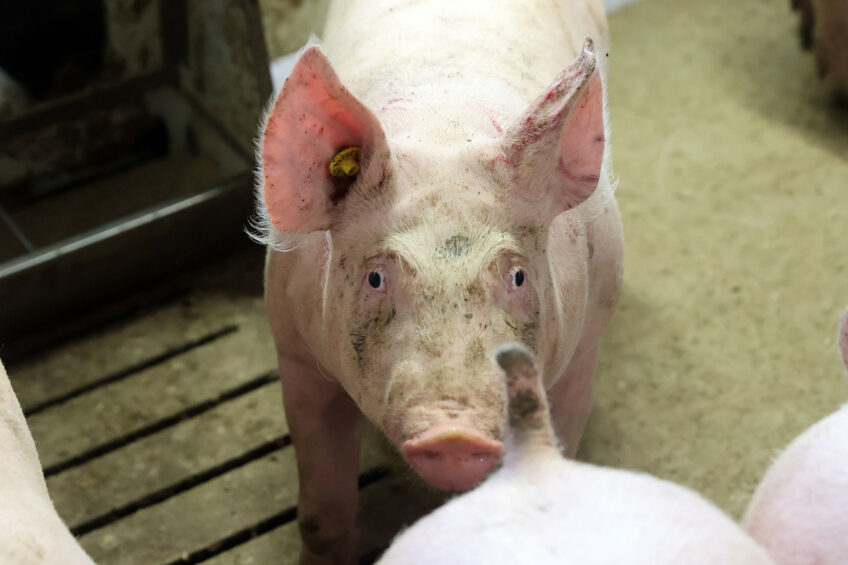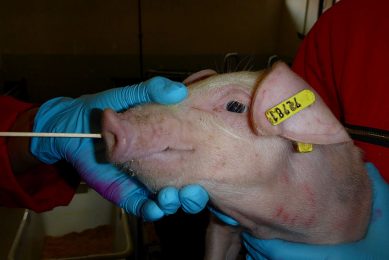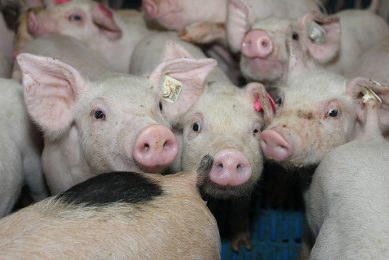Biomarkers show vaccine-associated lung problems in pigs

A team of US researchers identified biomarkers associated with vaccine-associated enhanced respiratory disease (VAERD) following an influenza A virus infection in pigs for antemortem clinical diagnosis.
They published their findings in Veterinary Immunology and Immunopathology.
Whole-inactivated virus vaccines are effective against influenza A virus in pigs. However, they have limited effectiveness against antigenically drifted viruses. In addition, administration of these vaccines may lead to VAERD. The clinical diagnosis of VAERD is challenging because it requires a prior vaccine history and the evidence of severe disease symptoms through necropsy.
About the study
The researchers used male and female pigs from a Porcine Reproductive and Respiratory Syndrome (PRRS) and influenza virus free herd for this trial. Then they randomly assigned pigs into 2 groups and vaccinated only one group with whole-inactivated virus vaccine against influenza A. In the next step, they challenged all pigs with a heterologous influenza virus to induce the VAERD in the vaccinated group. Later, they humanely euthanised pigs and necropsied at 5 days post infection. They collected blood samples to evaluate plasma chemistry, and blood cells as biomarkers. In addition, they gathered swab samples for virus isolation and titration and collected lung samples for lesion assessment.
The impact of vaccination on VAERD development in pigs
Vaccinated pigs developed elevated macroscopic and microscopic lesions in their lungs compared to non-vaccinated group. In addition, vaccinated pigs showed increased viral titers in the early days and decreased viral titers in the later days in nasal swabs after infection.
Impact on potential blood biomarkers after challenge
Vaccinated pigs developed a virus-specific immunoglobulin (IgG) that was cross-reactive to the challenge virus. Furthermore, vaccinated pigs showed an increased total white blood cell number due to an increased level of neutrophils as immune response cells compared to non-vaccinated pigs. In addition, vaccinated pigs demonstrated differential changes in plasma chemistry parameters such as albumin, globulins, and procalcitonin and increased levels of acute phase proteins CRP, haptoglobin, and citrullinated histone H3 compared to non-vaccinated pigs. Moreover, vaccinated pigs had increased cytokine and interleukin levels.
Conclusion
The authors concluded that white blood cells including neutrophils, and high levels of serum acute phase proteins such as CRP, haptoglobin, and citrullinated histone H3 can be used as biomarkers for the clinical diagnosis of VAERD in pigs.











